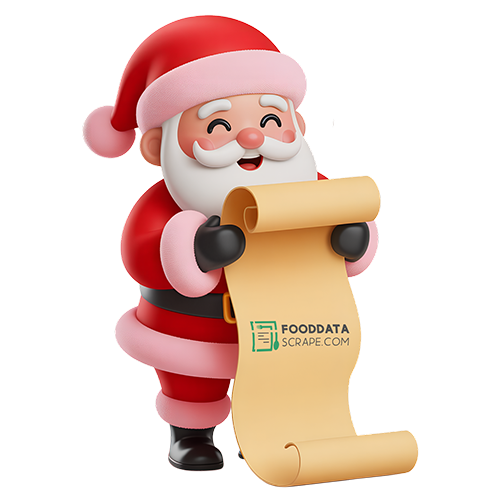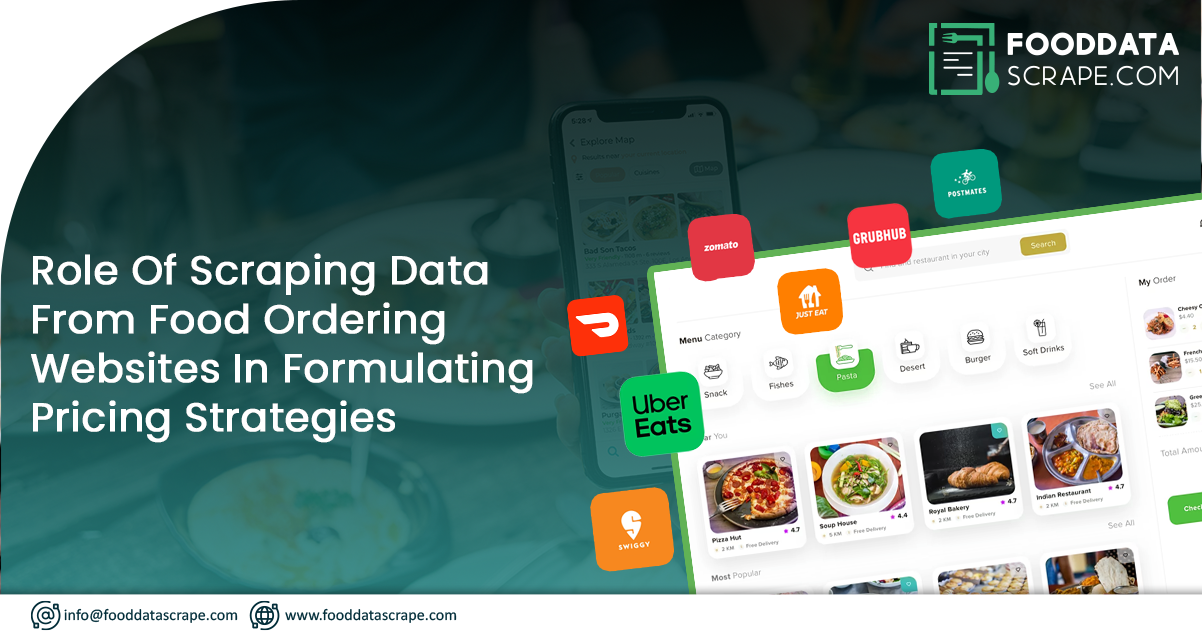In the digital age, scraping data from food ordering websites has become a strategic imperative for businesses seeking a competitive edge in the culinary landscape. Businesses can leverage tools like BeautifulSoup and Selenium to unravel the intricacies of these platforms, extracting valuable insights on restaurant offerings, menu dynamics, pricing strategies, and customer reviews. Static content scraping and dynamic content handling ensures a holistic data collection process. Ethical considerations, including adherence to terms of service and responsible scraping practices, play a pivotal role: regular script updates and rate limiting mitigate potential disruptions and maintain harmonious interactions with website servers. The extracted data becomes a powerful resource, empowering businesses to make informed decisions on marketing tactics, menu optimizations, and strategic positioning in the dynamic realm of food-ordering websites. Ultimately, responsible food delivery data scraping emerges as a critical driver for culinary success and competitive differentiation in the modern digital dining landscape.
Some Examples of Food Ordering Websites
Uber Eats: Uber Eats is a globally recognized platform that connects users with local restaurants, offering diverse cuisines. With a user-friendly interface, it provides efficient food delivery services from neighborhood eateries, ensuring a convenient and varied dining experience. Scrape Uber Eats food delivery data to obtain insights into diverse restaurant offerings, pricing models, customer reviews, and delivery logistics. This comprehensive dataset enables businesses to analyze market trends, refine strategies, and enhance their competitive positioning in the dynamic landscape of online food delivery services.

Grubhub: Grubhub stands out for its extensive network of restaurants, allowing users to order food online for either delivery or pickup. Known for its reliability and broad culinary choices, Grubhub is a go-to platform for those seeking diverse dining options. Scrape Grubhub food delivery data to access critical information on restaurant menus, pricing strategies, customer reviews, and delivery details. This comprehensive dataset empowers businesses to analyze market trends, refine their strategies, and maintain a competitive edge in the ever-evolving landscape of online food delivery services.

DoorDash: Specializing in on-demand food delivery, DoorDash partners with various restaurants to bring diverse culinary experiences directly to users' doors. Known for its quick and reliable service, DoorDash caters to various gastronomic preferences. Scrape DoorDash food delivery data to extract essential information on restaurant menus, pricing strategies, customer reviews, and delivery logistics. This valuable dataset empowers businesses to analyze market trends, optimize their offerings, and stay competitive in the dynamic landscape of online food delivery services.

Postmates: Postmates goes beyond traditional food delivery, offering a versatile platform for delivering groceries, alcohol, and various goods to users' doorsteps. This flexibility has made Postmates a convenient choice for various needs. Scrape Postmates food delivery data to gather insights into diverse culinary offerings, pricing models, and delivery dynamics. This comprehensive dataset empowers businesses to analyze market trends, refine their strategies, and enhance their competitive position in the evolving landscape of online food delivery.

Zomato: Zomato is a global restaurant discovery and food delivery platform in numerous countries. It provides users with a comprehensive dining experience, allowing them to discover new restaurants and conveniently order their favorite meals for delivery. Scrape Zomato food delivery data to collect vital information on restaurant menus, pricing structures, customer reviews, and delivery logistics. It enables businesses to gain valuable insights, optimize their offerings, and stay attuned to market trends for a competitive edge in the dynamic food delivery industry.

Just Eat: Operating internationally, Just Eat connects users with local restaurants for seamless online ordering. With a wide-reaching network, Just Eat ensures that users can easily access various culinary options from the comfort of their homes. Scrape Just Eat food delivery data to access comprehensive information on restaurant menus, pricing, customer reviews, and delivery details, empowering businesses to analyze market trends and optimize strategies for a competitive edge in the online food delivery landscape.

Swiggy: As a significant player in India, Swiggy offers food delivery directly to customers' homes from local restaurants. Known for its prompt and reliable service, Swiggy has become a prominent platform in Indian food delivery. Scrape Swiggy food delivery data to gain insights into restaurant offerings, pricing strategies, and customer preferences. It enables businesses to make informed decisions and stay competitive in the dynamic online food delivery market.

Significance of scraping data from food ordering websites
- Market Trends Analysis: Scraping data from food ordering websites allows businesses to analyze real-time market trends, helping them stay ahead of the competition and adapt to changing consumer preferences.
- Competitor Benchmarking: Extracting competitor data using a restaurant data scraper provides a business benchmark, offering insights into rival strategies, pricing models, and menu optimizations, enabling strategic decision-making.
- Menu Innovation: Detailed menu data helps businesses identify gaps in their offerings, facilitating menu innovation and ensuring alignment with current culinary trends and customer preferences.
- Dynamic Pricing Strategies: Access to pricing data supports the development of dynamic pricing strategies, enabling businesses to stay competitive while maximizing revenue based on market demand.
- Customer Experience Enhancement: Scraping food delivery data offers a deeper understanding of customer behavior, allowing businesses to enhance the overall customer experience by tailoring services to specific preferences.
- Operational Efficiency Improvement: Utilizing scraped data aids in operational efficiency by optimizing inventory management, streamlining order fulfillment, and improving overall logistics in the food delivery process.
- Targeted Marketing Campaigns: Data-driven insights enable businesses to create targeted marketing campaigns, reaching specific customer segments with personalized promotions and advertisements.
- Strategic Partnerships Identification: Scraping data facilitates the identification of successful partnerships between restaurants and platforms, guiding businesses in forming strategic alliances for mutual growth and success.
For profound insights, connect with Food Data Scrape. We specialize in Food Data Aggregator and Mobile Restaurant App Scraping, offering comprehensive data analytics and insights to enrich your decision-making and elevate your business strategies. Reach out today to unlock a pathway to success guided by data-driven intelligence.

































































































